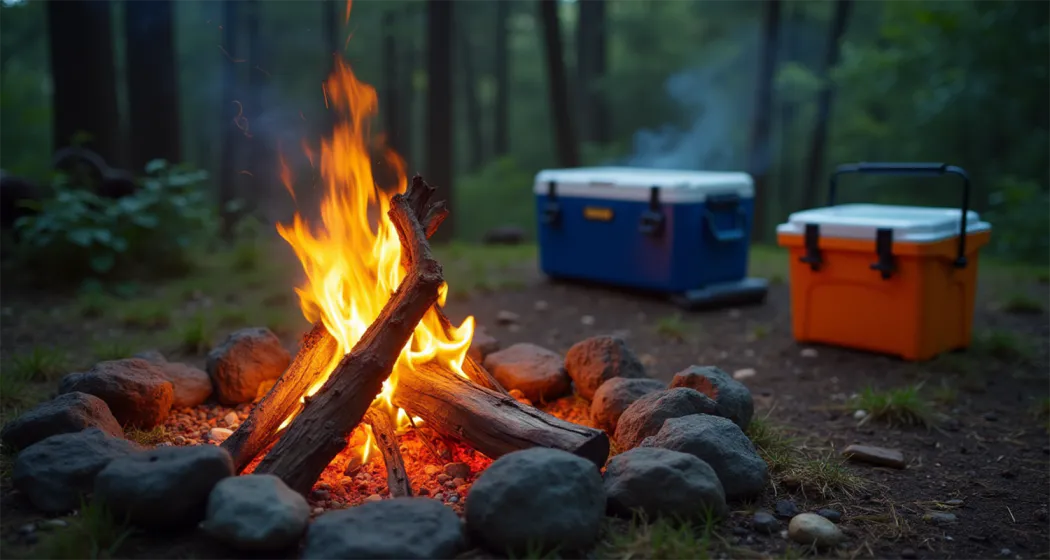
The Ultimate Guide to Packing and Storing Camping Meals: Tips for Freshness and Safety
Camping is one of the best ways to immerse yourself in nature and escape the hustle of daily life. However, nothing ruins a trip faster than spoiled food or poorly planned meals. Proper Packing and Storing Camping Meals not only ensures freshness and safety but also makes the experience more enjoyable and stress-free.
This comprehensive guide will teach you how to prepare your meals, select the best storage methods, and implement essential food safety and wildlife protection tips. Get ready to elevate your camping experience with these expert insights!
1. Plan Ahead for Success
How thoughtful meal planning saves time and reduces waste
Successful camping trips start long before you leave home. Thoughtful planning ensures you pack the right amount of food, avoid waste, and have all the ingredients you need to whip up delicious meals in the wild.
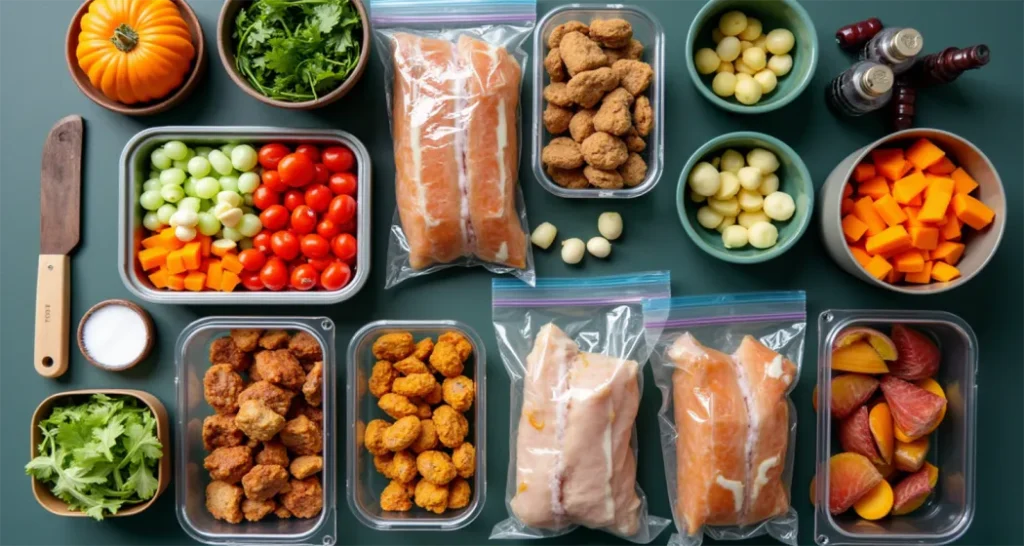
Step-by-Step Meal Planning Guide:
- Assess Your Needs:
- How many people are you feeding?
- How many days and nights will you be camping?
- Are there any dietary restrictions in your group?
- Choose Practical Recipes:
- Select meals that are simple to prepare and require little cooking effort. For instance, dishes like pasta with jarred sauce or foil-wrapped meals are both convenient and tasty.
For inspiration, check out our 60 Camping Lunch Ideas for quick and delicious recipes perfect for your next trip
- Include “no-cook” options like sandwiches or salads for quick meals.
- Prep Ingredients in Advance:
- Wash, chop, and portion vegetables.
- Marinate proteins and pack them in vacuum-sealed bags.
- Pre-cook rice, pasta, or grains to save time.
- Factor in Snacks and Desserts:
- Bring a mix of healthy and indulgent options, like trail mix, jerky, chocolate, and marshmallows for s’mores.
Pro Tip: Write down your meal plan and use it as a checklist while packing. This ensures you don’t forget anything important.
2. Choose the Right Storage Containers
Keep your food fresh and organized with the best containers
The right storage containers make packing and organizing food much easier. Choosing the right materials and designs is crucial to maintaining freshness and preventing leaks or contamination.
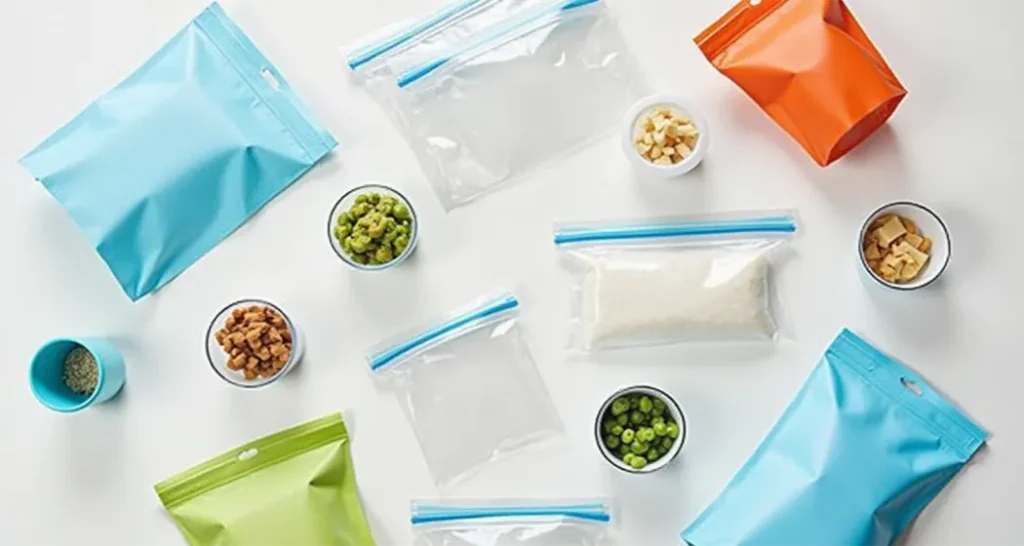
Best Containers for Different Needs:
- Airtight Containers:
- Ideal for keeping leftovers fresh and protecting food from pests.
- Look for BPA-free plastic or stainless steel options.
- Vacuum-Sealed Bags:
- Perfect for marinated meats or pre-prepped vegetables.
- Vacuum sealing reduces bulk and prevents freezer burn.
- Collapsible Containers:
- Great for saving space as your food supplies dwindle.
- Made from lightweight silicone or plastic.
- Reusable Silicone Bags:
- Eco-friendly and versatile for storing everything from snacks to liquids.
Bonus Tip: Use color-coded containers to differentiate between meals or ingredients, making it easier to locate what you need.
3. Maximize Cooler Efficiency
How to keep your perishable foods cold and safe
Coolers are essential for camping, especially if you’re bringing perishable items. But keeping your cooler cold for an extended period requires careful packing and handling.
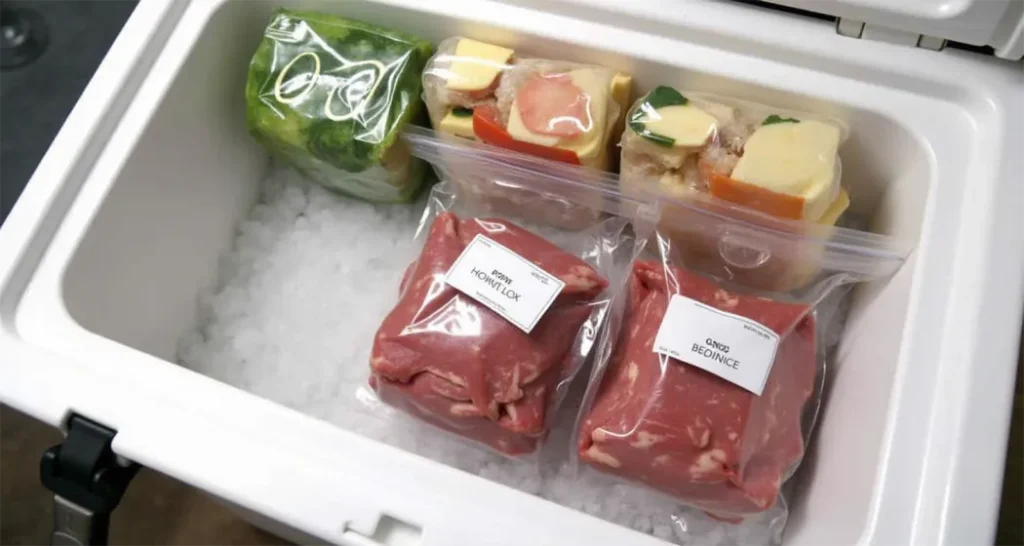
Advanced Cooler Tips:
- Pre-Chill All Items:
Freeze or refrigerate everything you’ll store in the cooler beforehand. - Create an Ice Strategy:
- Use block ice, which melts slower than cubes.
- Freeze water bottles to use as ice packs—they serve a dual purpose as drinking water once melted.
- Pack in Layers:
- Start with ice at the bottom.
- Add tightly sealed meats, then layer perishables like dairy, fruits, and veggies.
- Limit Opening:
- Open your cooler only when necessary.
- Pack a separate drink cooler to prevent frequent access to the food cooler.
Did You Know? Dry ice is an excellent option for longer trips but must be handled with care. Place it on top of your food, as cold air sinks.
4. Pack Smart with Non-Perishables
Your go-to foods for camping without refrigeration
Non-perishable foods are a camper’s best friend. They’re lightweight, require no refrigeration, and are incredibly versatile.
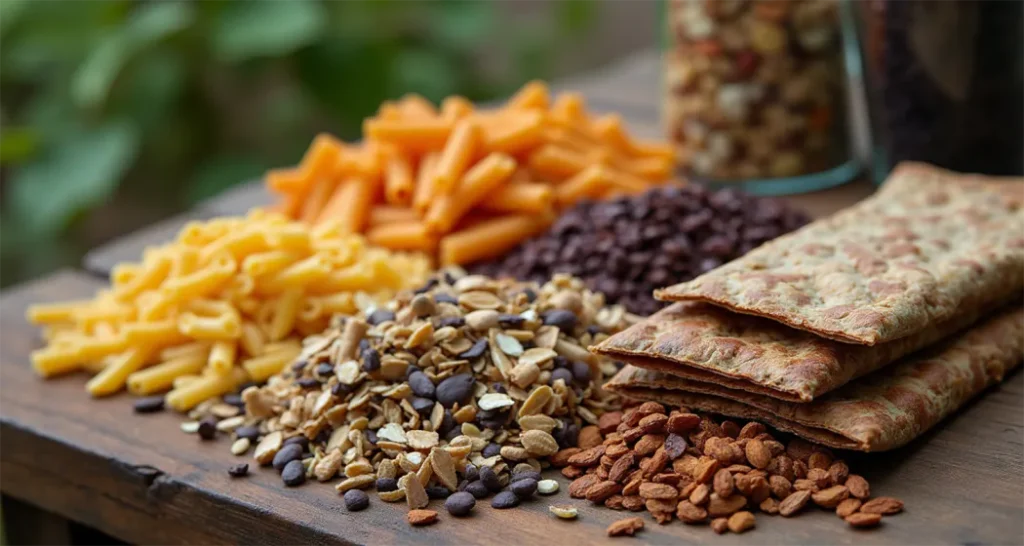
Expand Your Non-Perishable Options:
- Breakfast Ideas:
- Instant oatmeal packets (just add hot water).
- Powdered eggs for quick scrambles.
- Lunch Options:
- Canned tuna or chicken with crackers.
- Peanut butter wraps with honey or banana slices.
- Dinner Staples:
- Dried pasta with jarred sauce.
- Instant mashed potatoes with gravy mix.
- Snacks:
- Energy bars, granola, and mixed nuts.
- Dried fruits like mangoes, apricots, and apples.
Pro Tip: Keep spices and seasonings in small, reusable containers to elevate your campfire meals without extra bulk.
5. Protect Your Food from Wildlife
How to keep animals away from your campsite
Wildlife encounters can be thrilling, but not when it involves a bear rummaging through your food. Proper storage is critical for your safety and the environment.
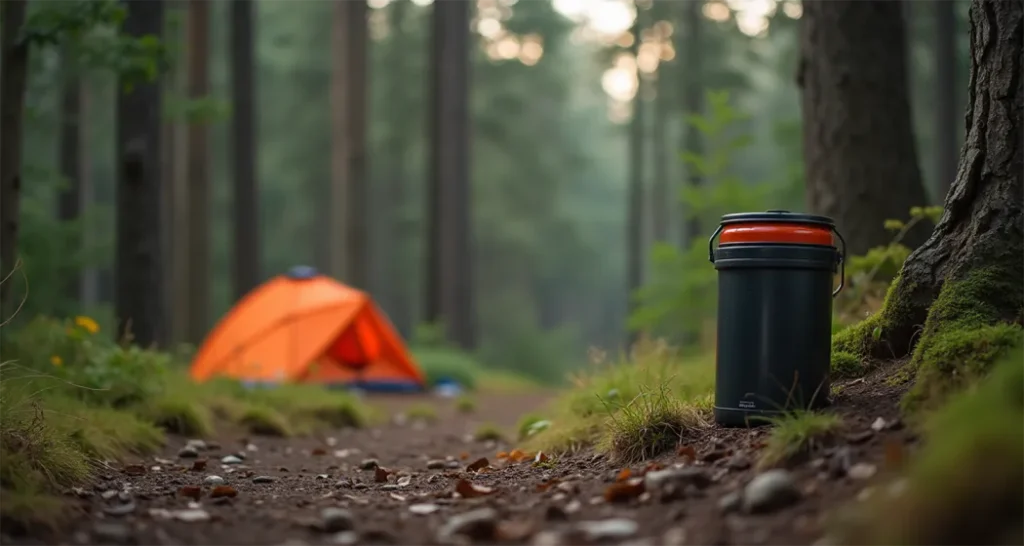
For detailed wildlife-safe food storage regulations, check the National Park Service’s official guidelines
Best Practices for Wildlife-Safe Storage:
- Use Bear Canisters:
- These sturdy, lockable containers are mandatory in many parks.
- Hang Food Properly:
- If you don’t have a canister, hang your food in a tree at least 15 feet off the ground and 10 feet from the trunk.
- Avoid Attracting Pests:
- Never leave food, trash, or scented items (like toothpaste) in your tent.
- Keep Cooking Areas Clean:
- Wash dishes and utensils immediately after use.
Quick Fact: Raccoons and squirrels are also common food thieves—secure your supplies even in non-bear areas.
6. Prioritize Food Safety
Avoid foodborne illness with these essential tips
Food safety is even more critical when camping, as medical help may be far away. Follow these best practices to keep your group healthy.
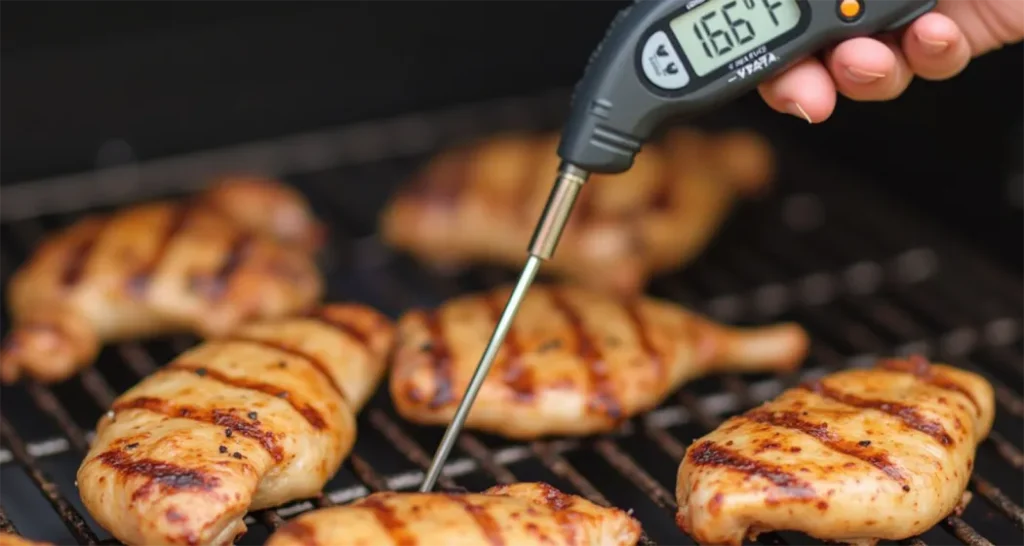
Essential Food Safety Guidelines:
- Keep Cold Foods Cold:
- Perishable items must stay below 40°F.
- Cook Thoroughly:
- Use a thermometer to check meat temperatures (e.g., poultry should reach 165°F).
- Practice Good Hygiene:
- Wash your hands with biodegradable soap before handling food.
- Store Leftovers Properly:
- Use airtight containers and store them in the cooler promptly.
Pro Tip: Pack disposable gloves for handling raw meat to prevent cross-contamination.
7. Pack Light Without Sacrificing Nutrition
Efficient packing for minimalist campers
If you’re backpacking or camping with limited space, every ounce counts. Here’s how to stay lightweight without compromising on quality meals.
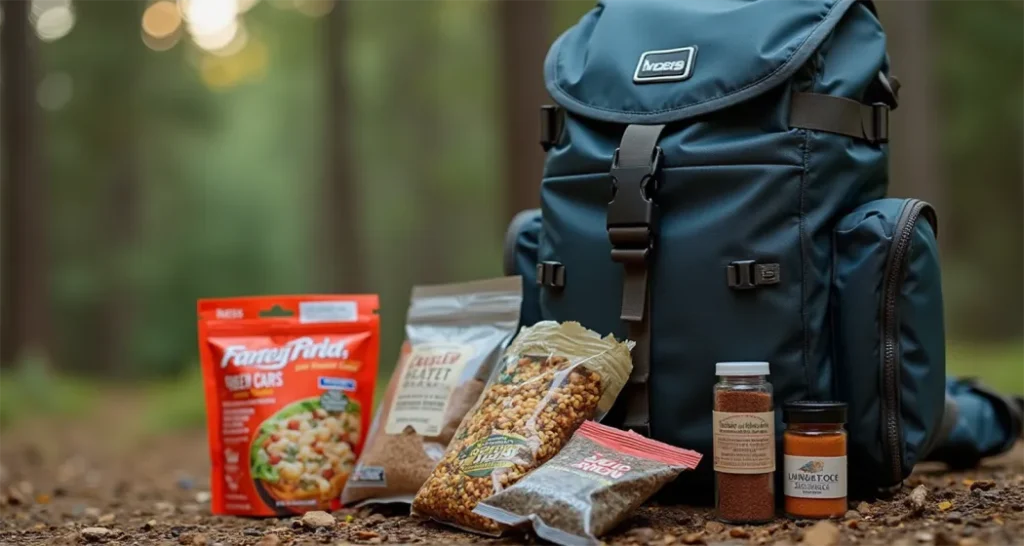
Smart Packing Strategies:
- Dehydrate Your Meals:
- Invest in a food dehydrator to prepare lightweight, long-lasting meals.
- Focus on Multipurpose Ingredients:
- Tortillas can double as wraps and pizza bases
- Compact Cooking Gear:
- Opt for collapsible pots, pans, and utensils.
Quick Tip: Carry small sachets of olive oil or powdered butter to add flavor and calories to your meals.
8. Extend Freshness on Longer Trips
Tips for extended camping adventures
For multi-day trips, keeping food fresh requires extra planning and creative solutions.
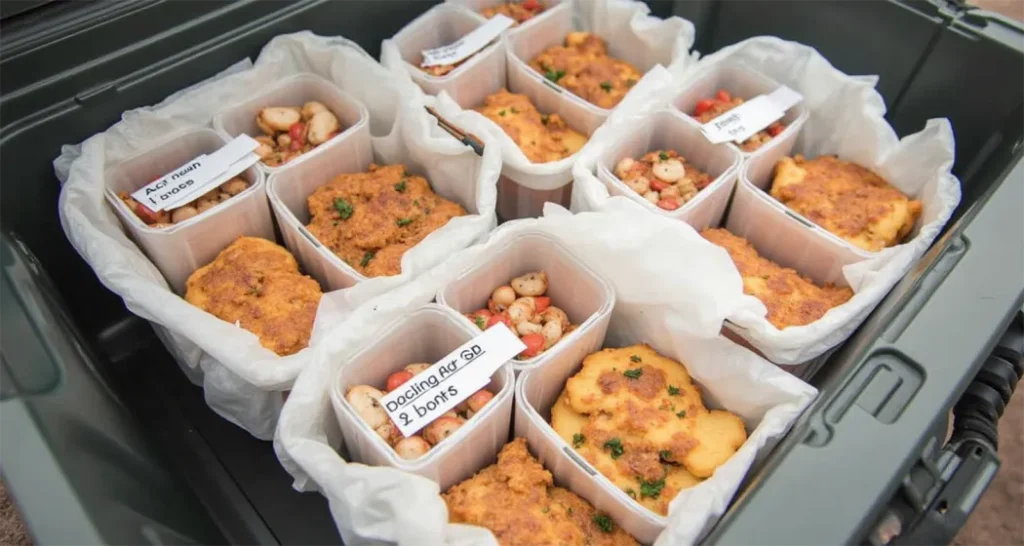
Prolonging Freshness:
- Rotate Perishables:
- Consume fresh produce and dairy early, then switch to non-perishables.
- Invest in Advanced Coolers:
- High-end coolers can keep ice frozen for up to 10 days.
- Freeze Meals in Advance:
- Pre-cooked meals can double as ice packs until thawed.
Your Camping Meal Master Plan
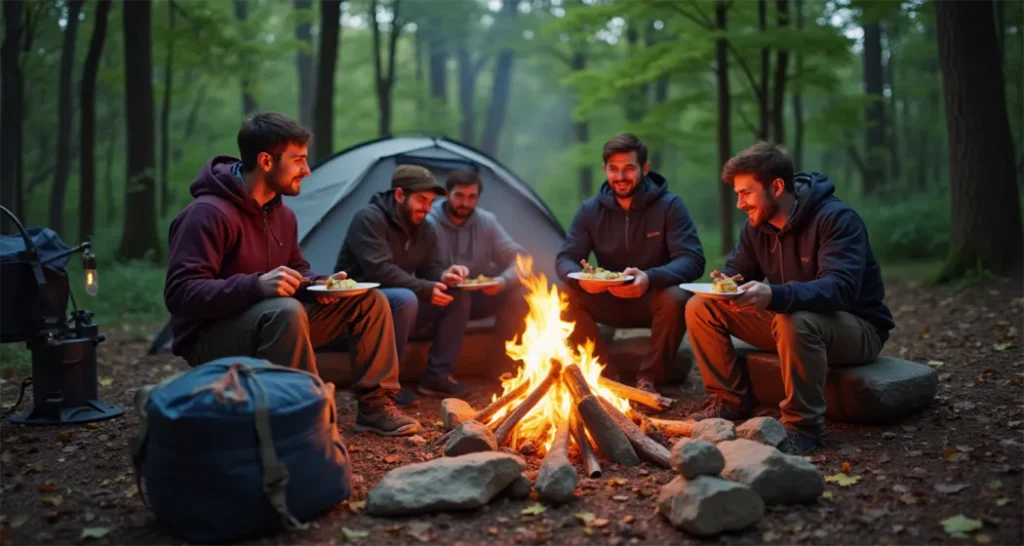
Packing and Storing Camping Meals doesn’t have to be stressful. With careful planning, smart packing techniques, and attention to safety, you can enjoy fresh, delicious meals in the great outdoors. Whether it’s a short weekend trip or a week-long expedition, these tips will keep your food fresh and your trip worry-free.
